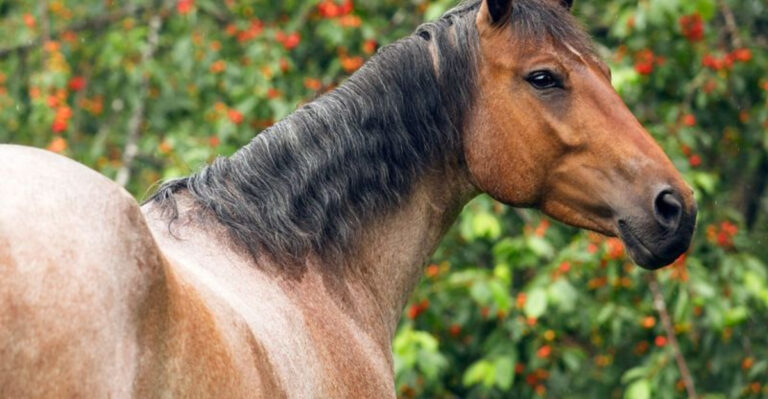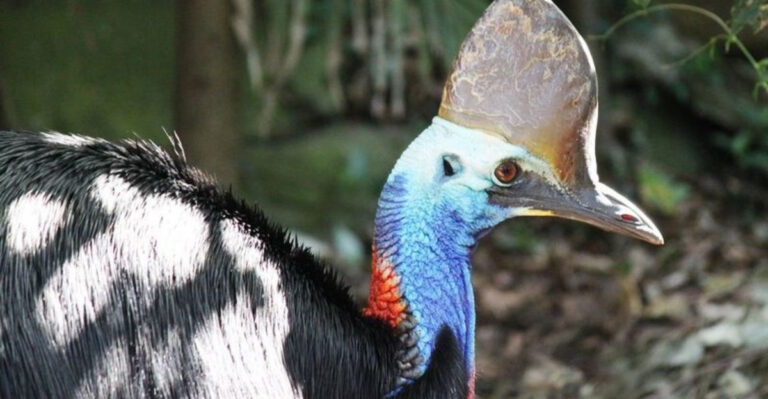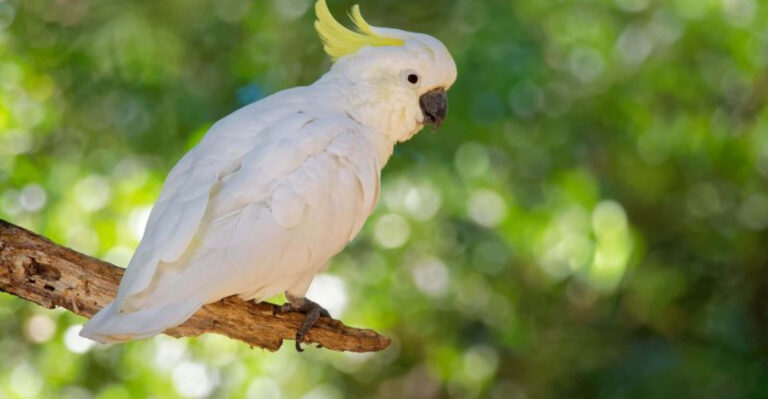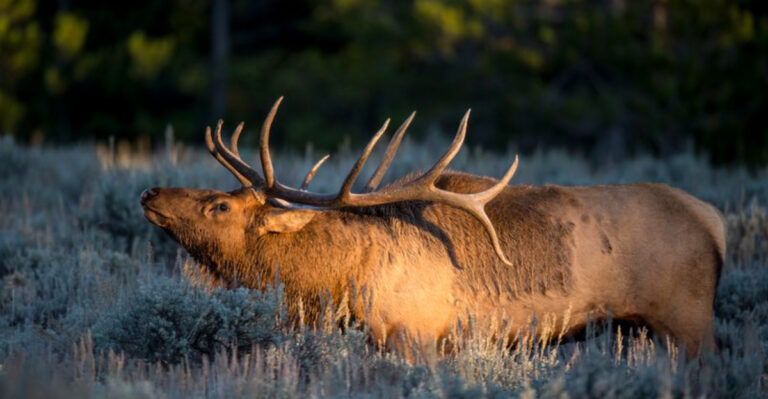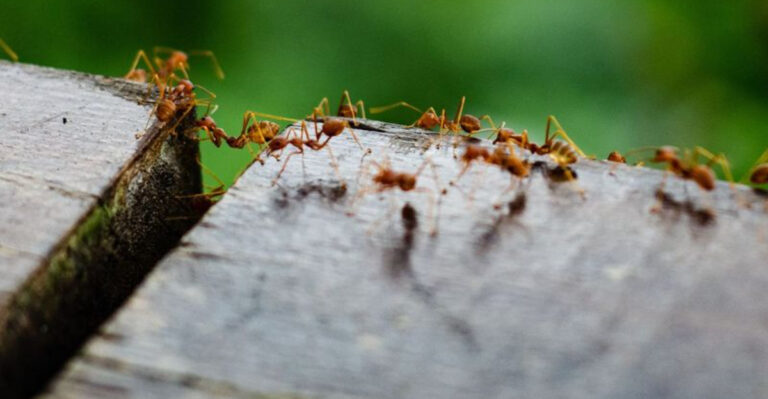34 Of The Most Majestic And Awe-inspiring Animals On Earth
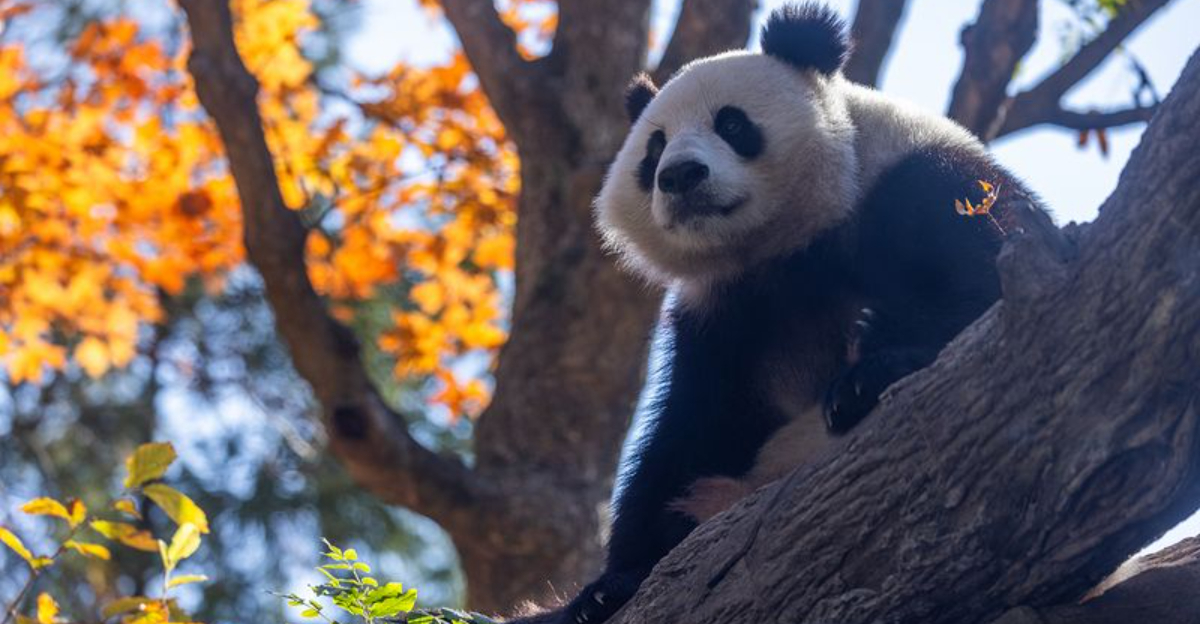
The animal kingdom is full of creatures that captivate our imaginations and leave us in awe of nature’s incredible diversity and beauty.
From the majestic snow leopard silently prowling through snow-covered mountains to the towering giraffe gracefully grazing on treetops, these animals embody strength, elegance, and the wonders of the wild.
1. King Cobra
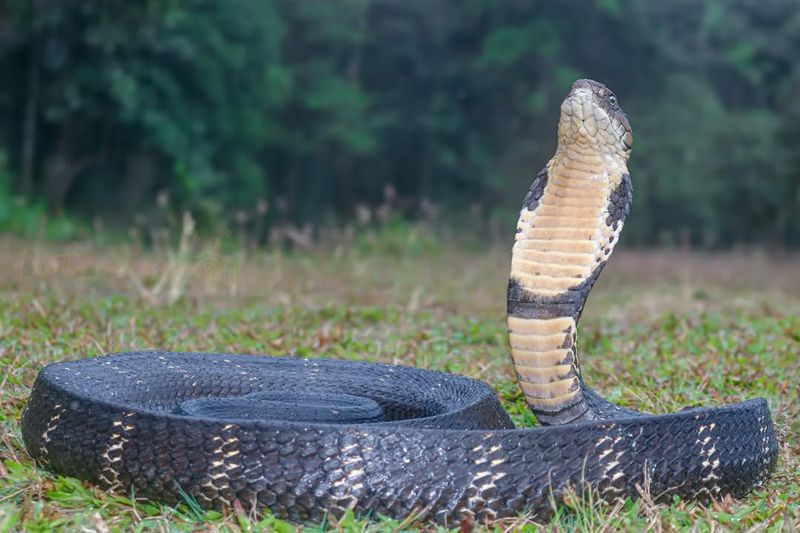
As the world’s longest venomous snake, King Cobra is capable of reaching lengths of up to 18 feet. Known for its intimidating hood and powerful presence, the King Cobra is a true symbol of power and precision in the wild.
It commands respect due to its size, deadly venom, and role as an apex predator. With its elegant, fluid movements and the air of mystery it carries, the King Cobra is one of the most awe-inspiring creatures on Earth.
2. Mandrill
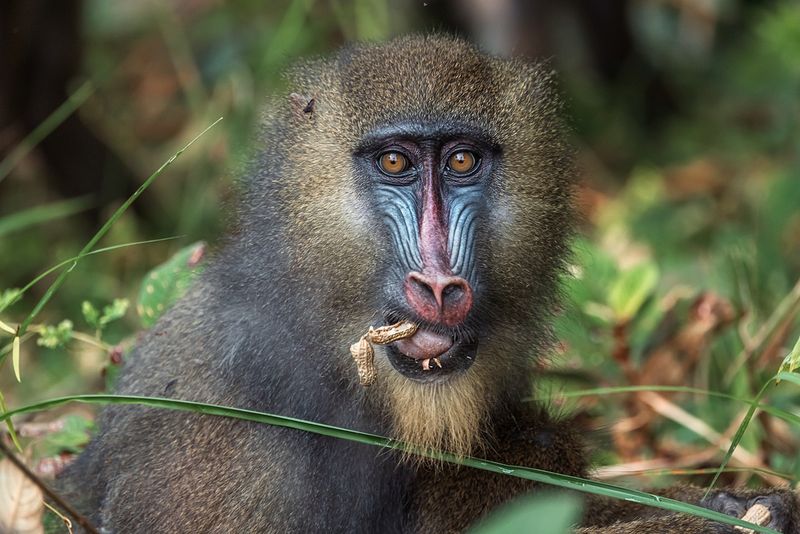
The Mandrill is a colorful, powerful primate found in the rainforests of Central Africa. Known for its vivid facial coloration, which includes blue and red markings, the Mandrill is not only visually striking but also a symbol of strength and social complexity.
As one of the largest monkeys in the world, it commands attention with its bold colors and impressive size, making it an awe-inspiring creature in the animal kingdom.
3. Snow Leopard
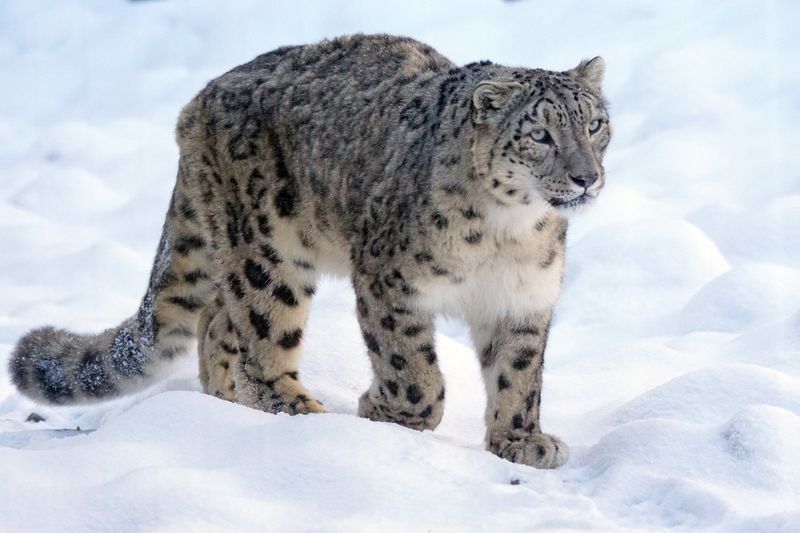
In the rugged mountains of Central Asia, the snow leopard prowls like a shadow in the snow, blending seamlessly with its icy surroundings. With its thick, spotted coat, this elusive predator moves silently through the terrain, making it a near-mythical figure.
Its keen hunting skills, combined with its ability to thrive in the harshest environments, make the snow leopard a symbol of both beauty and resilience.
4. Bengal Tiger
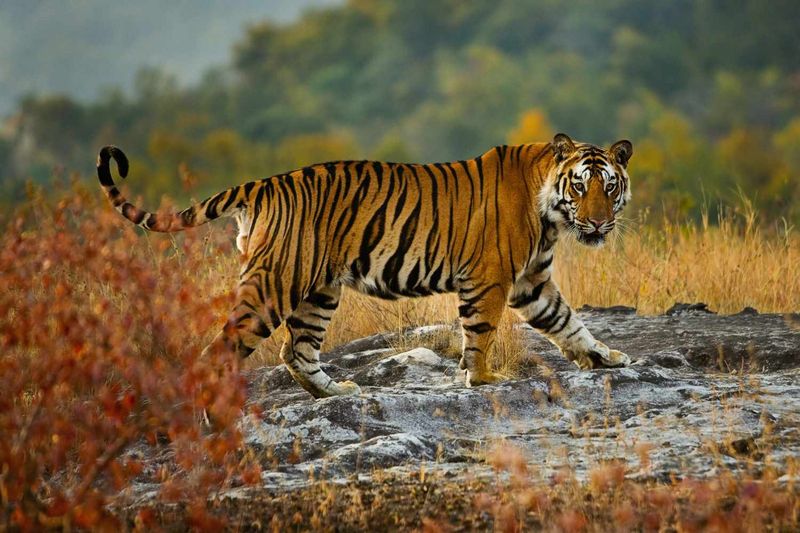
The Bengal tiger commands the jungles of India and Bangladesh with a raw, untamable energy. With its striking orange coat and dark stripes, it moves through the forest like a living flame—both beautiful and terrifying.
As the largest of the tiger species, the Bengal tiger strikes awe with every calculated step, embodying the wild spirit of the jungle and the majesty of nature’s fiercest predator.
5. Bald Eagle
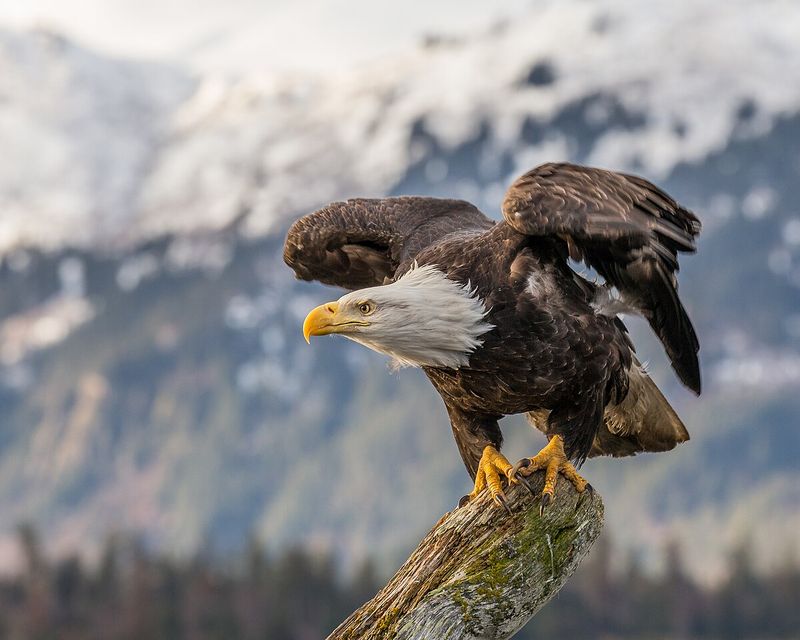
Soaring high above the American landscape, the bald eagle is a symbol of freedom and power. Its sharp, keen eyes scan the earth below, watching for prey or threats from miles away.
With a wingspan that stretches out over 7 feet, it cuts through the sky with ease, a living emblem of strength and sovereignty. The bald eagle’s majestic flight and commanding presence make it one of nature’s most awe-inspiring creatures.
6. African Elephant
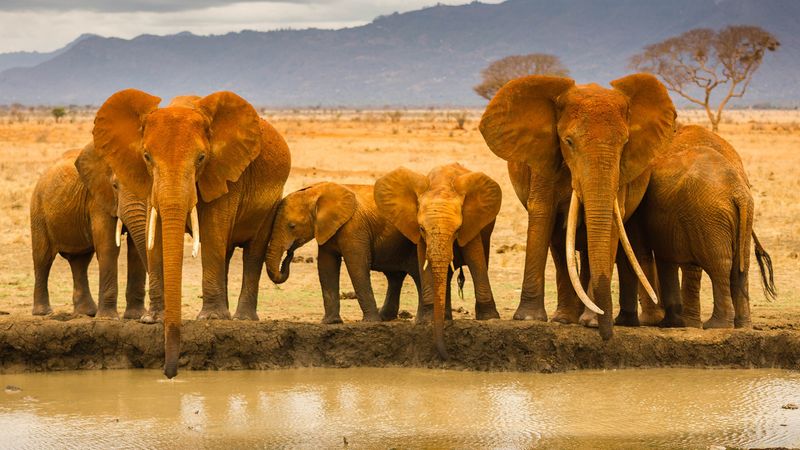
In the heart of Africa, the African elephant wanders the savanna, an embodiment of wisdom and strength. With its massive tusks and wrinkled skin, this gentle giant commands attention as it moves through the wild.
Known for its deep familial bonds and remarkable intelligence, the African elephant is a symbol of majesty, revered across cultures for its grandeur and importance in the ecosystem.
7. Blue Whale
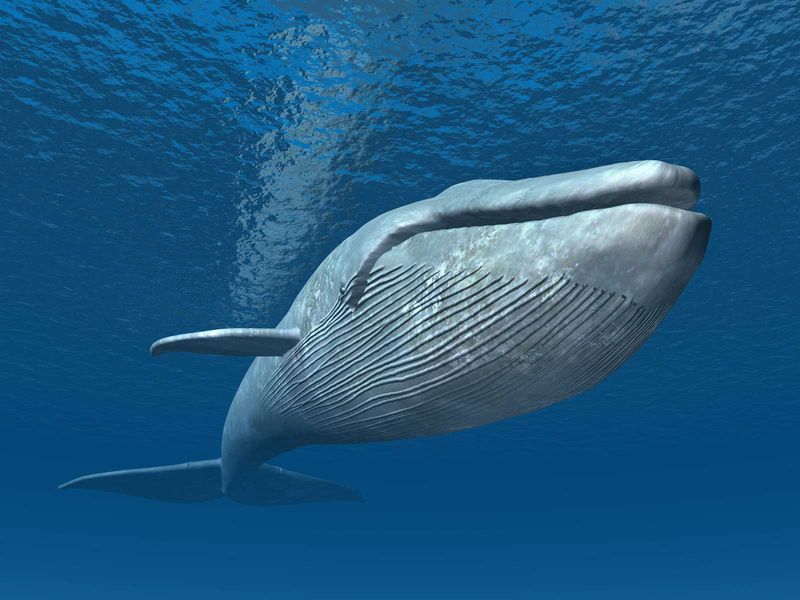
The blue whale, the largest creature to ever live on Earth, glides through the ocean like a floating island. Its massive, graceful movements create waves in the water, and despite its immense size, it moves with the kind of serene elegance that leaves observers in awe.
With hearts the size of small cars and a song that resonates through the deep, the blue whale is a living marvel of the ocean’s vastness.
8. Peacock
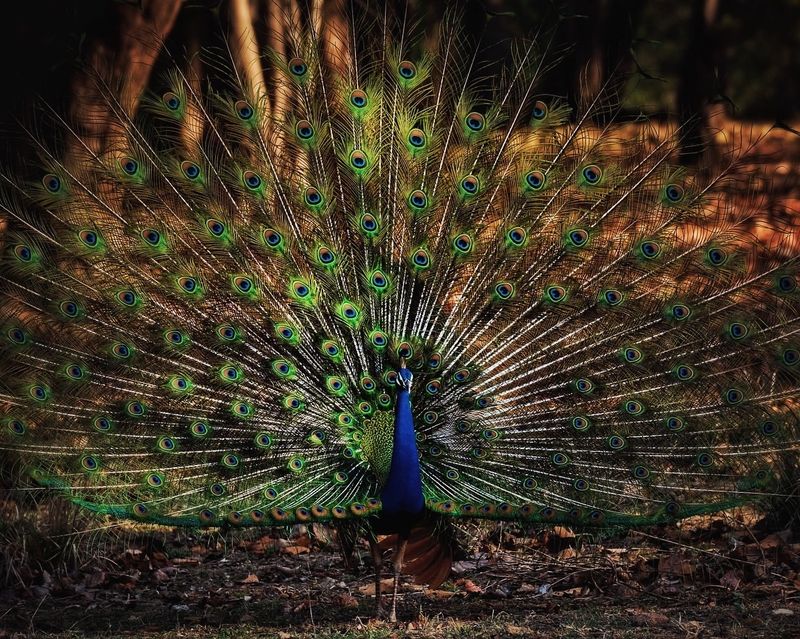
The peacock dazzles with a display of vibrant colors that seem almost too surreal to exist in nature. As it unfurls its iridescent tail feathers, the peacock transforms into a living masterpiece, strutting with pride and confidence.
This magnificent bird’s colorful plumage isn’t just for show—it’s a way of demonstrating its strength, beauty, and status, turning every movement into a work of art.
9. Great White Shark
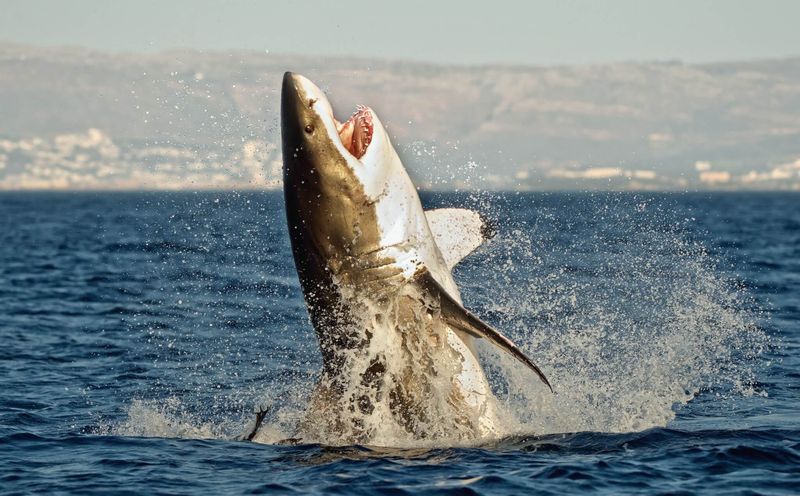
The great white shark is a silent and deadly force beneath the waves, moving through the ocean with stealth and precision. With its fearsome teeth and striking presence, it dominates the seas, commanding respect from all other creatures in its environment.
Though often feared, the great white is a perfect example of nature’s raw power and evolutionary perfection, a creature that embodies both mystery and majesty.
10. Giant Panda
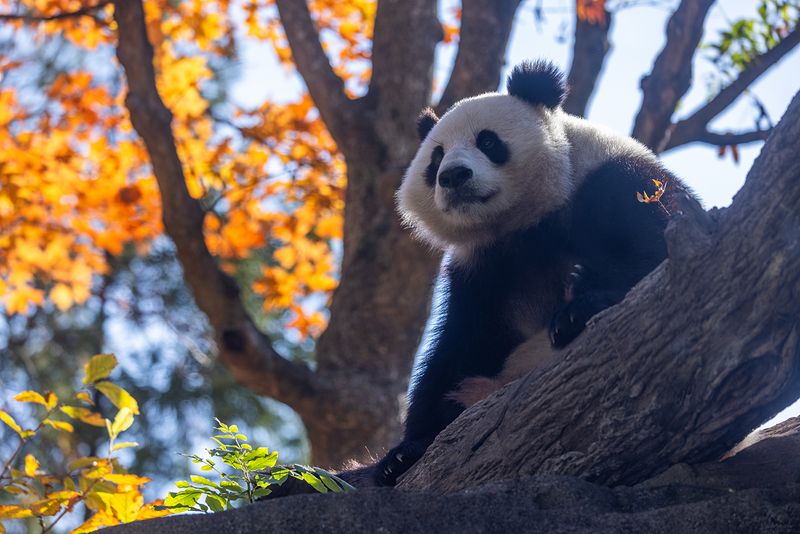
The giant panda is a symbol of gentle strength and quiet resilience. Its black-and-white fur contrasts sharply with the lush greenery of its mountain home, where it spends most of its life munching on bamboo.
Despite its cuddliness, the panda’s rare and elusive nature adds to its majesty, reminding us of the importance of conservation and the delicate balance of ecosystems.
11. Emperor Penguin
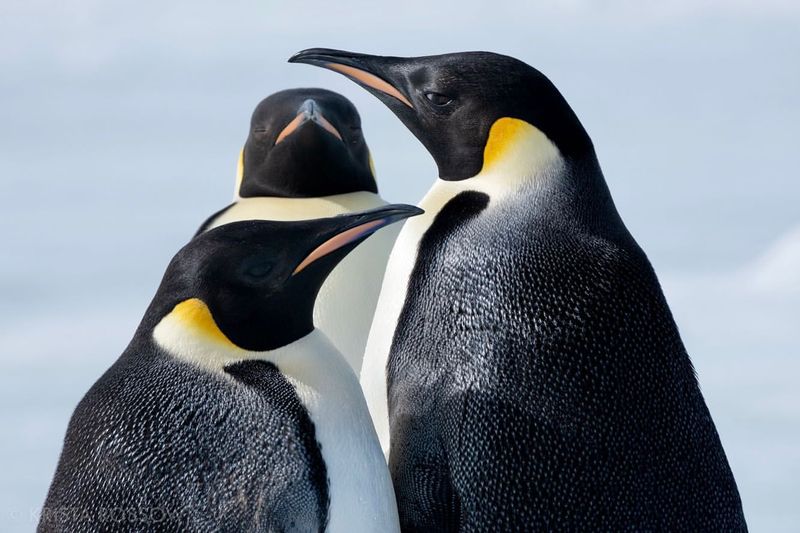
The emperor penguin endures one of the harshest climates on Earth, thriving in the frozen wastelands of Antarctica.
With its sleek, tuxedo-like appearance, it stands tall against the icy winds, enduring the cold and the relentless pursuit of survival. Despite the frigid environment, the emperor penguin’s resilience and ability to thrive in such conditions make it a living testament to the strength of nature’s smallest creatures.
12. Humpback Whale
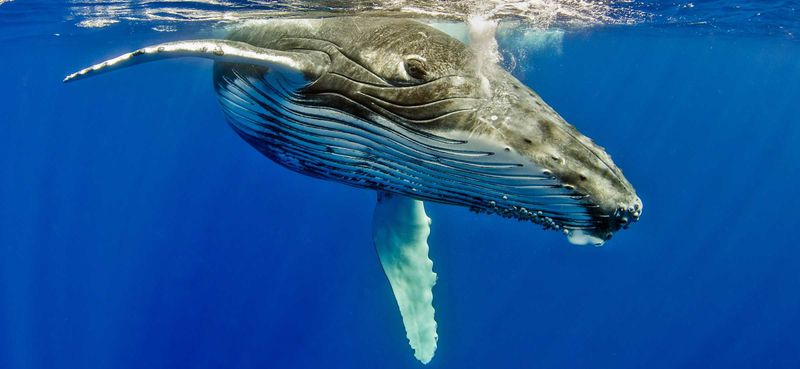
The humpback whale is known for its playful nature and hauntingly beautiful songs, which echo through the ocean’s depths. These massive creatures travel thousands of miles across oceans, moving with grace and power despite their size.
Their songs—sometimes complex and melodic—resonate across great distances, earning them a place as one of the most awe-inspiring animals in the world.
13. Golden Eagle
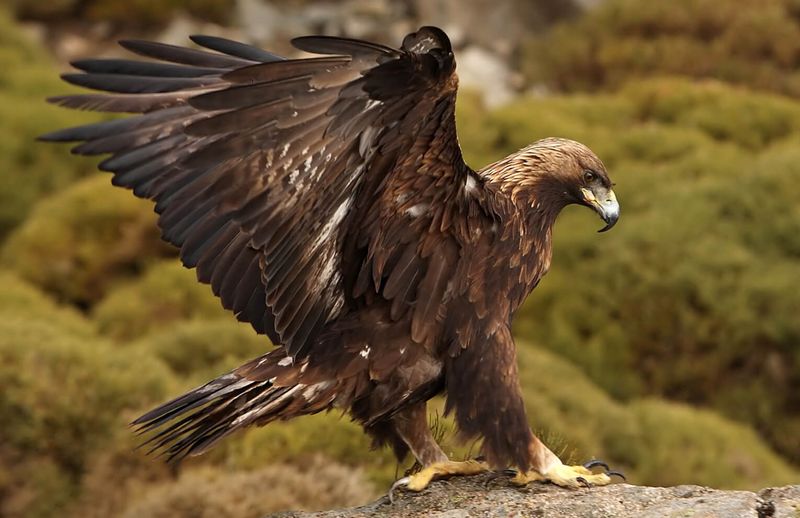
The golden eagle is a true monarch of the skies. With its powerful wings and sharp, calculated gaze, it commands the heights, swooping down with precision to catch prey.
Its feathers gleam like burnished gold in the sunlight, making it not only one of the most majestic birds but also one of the most skilled hunters in the world. The golden eagle’s elegance and fearlessness make it a living symbol of freedom.
14. Polar Bear
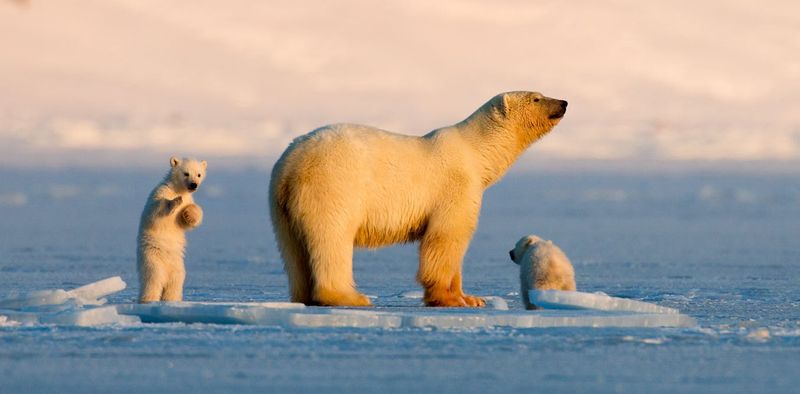
In the harsh, frozen wilderness of the Arctic, the polar bear reigns as the supreme predator. With its thick, white fur and powerful frame, it is perfectly adapted to survive the frigid temperatures.
These solitary creatures are symbols of strength and resilience, navigating the icy landscape with grace, but the effects of climate change are threatening their existence, making them even more remarkable and poignant in today’s world.
15. White Rhinoceros
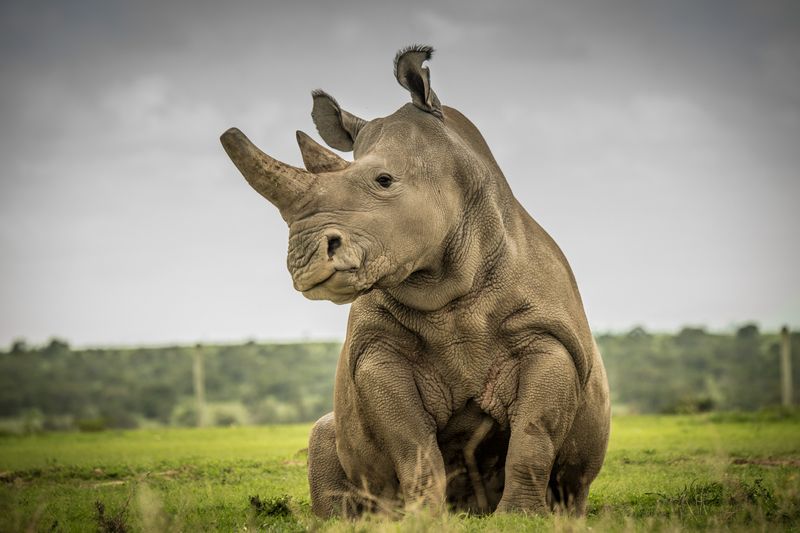
The white rhinoceros is a hulking, ancient creature that dominates the African savanna. With its thick skin and massive horns, it exudes a sense of strength and history.
Despite being one of the largest land mammals, the white rhino is often gentle, living in groups that demonstrate the importance of community and cooperation.
Its endangered status only makes its majestic presence more significant, reminding us of the need to protect the planet’s most magnificent creatures.
16. Harpy Eagle
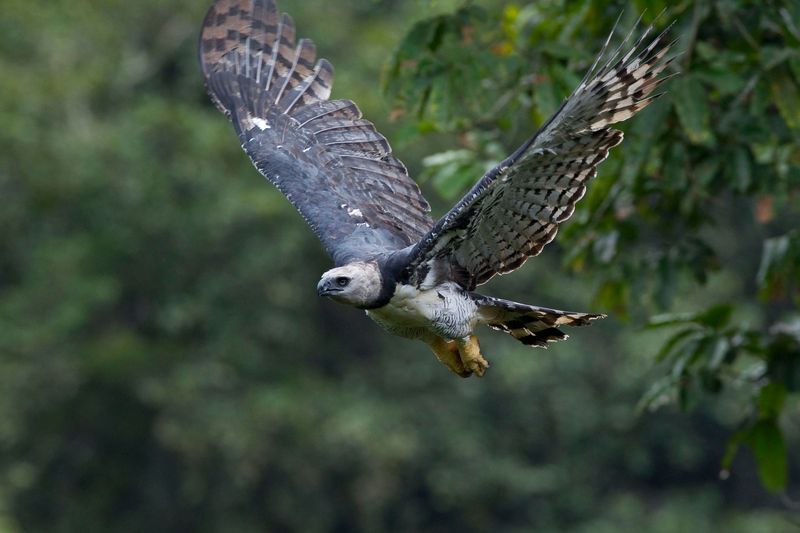
With talons the size of a bear’s claws and a fierce, predatory gaze, the harpy eagle is a powerful symbol of strength in the wild. Found in the rainforests of Central and South America, this majestic bird is an apex predator, capable of taking down monkeys and sloths.
Its striking appearance, with a feathered crest atop its head, adds to its mythic aura, making it a true marvel of nature’s design.
17. Komodo Dragon
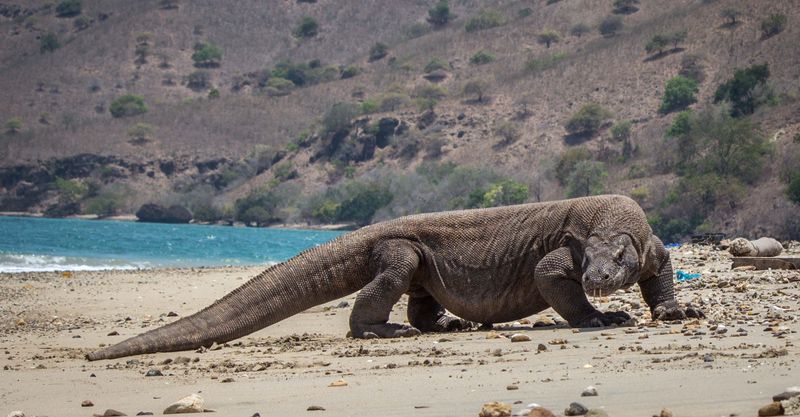
The Komodo dragon is a living relic of prehistoric times, a massive reptile with a fearsome presence. Found only on the islands of Indonesia, this apex predator commands respect, with its sharp teeth, powerful jaws, and the ability to track and hunt down prey with precision.
It’s one of the few remaining examples of ancient dragons, and its sheer size and prowess in the wild make it a living marvel.
18. Siberian Tiger
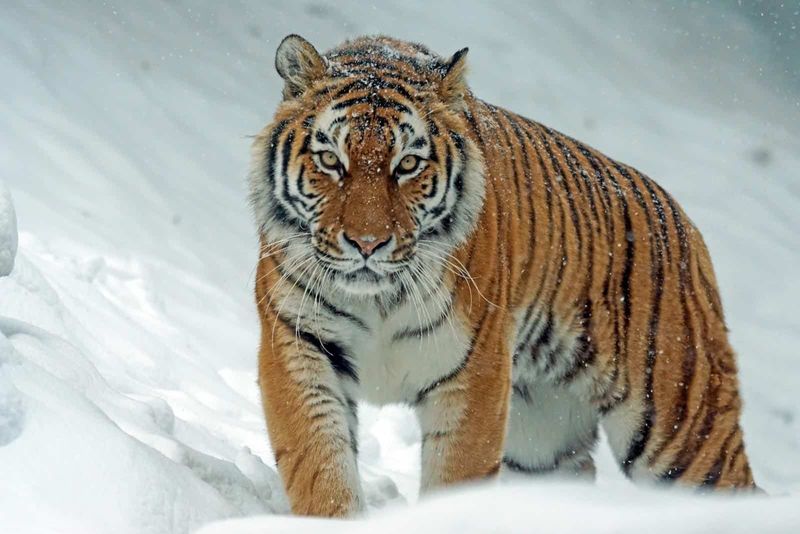
The Siberian tiger, with its thick orange coat and striking black stripes, is a creature built for the harsh winters of Russia.
As the largest tiger subspecies, it prowls the cold forests, its powerful frame and incredible hunting instincts making it a true apex predator. Rare and elusive, the Siberian tiger’s majestic presence in the wild continues to captivate and remind us of the wilderness’ untamed beauty.
19. Orca
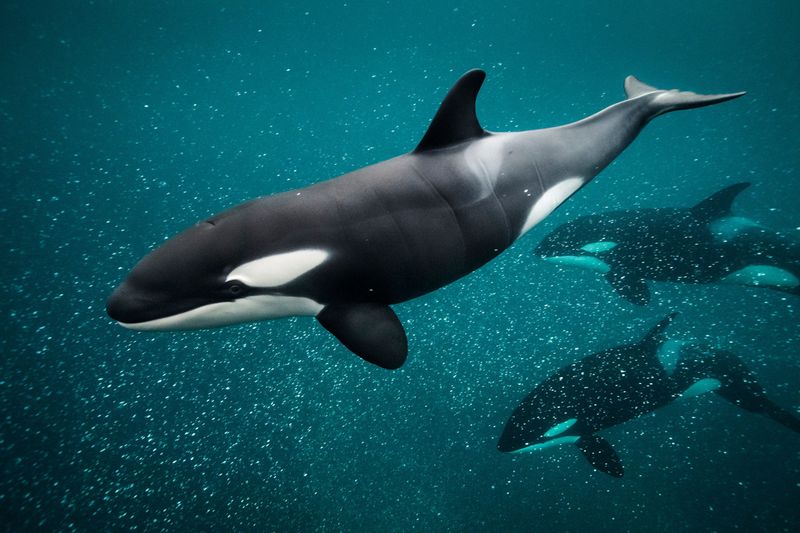
The orca, or killer whale, is a master of the ocean, known for its intelligence, agility, and complex social structures. These powerful predators hunt in coordinated groups, their remarkable communication and teamwork making them one of the most successful predators in the ocean.
Orcas are often referred to as the “wolves of the sea,” and their sleek black-and-white coloration makes them one of the most striking creatures of the ocean.
20. Mandarin Duck
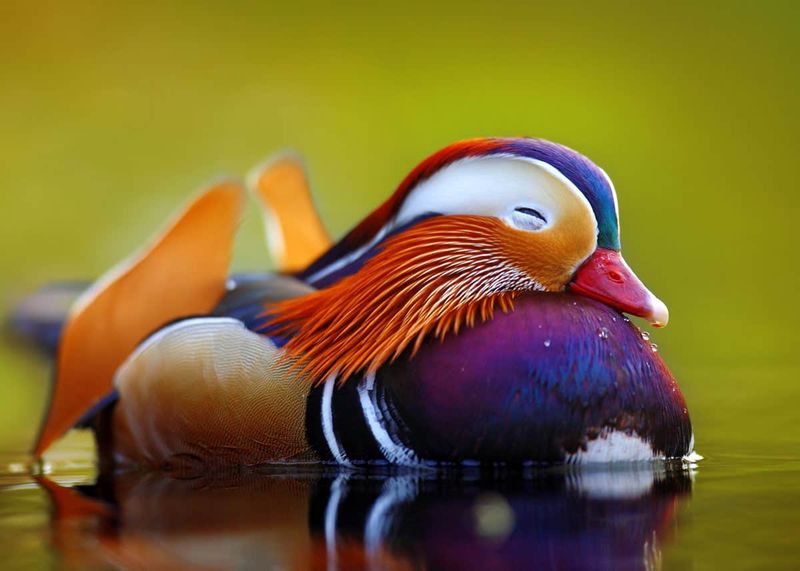
The mandarin duck is an explosion of color, with its vibrant plumage and striking patterns that make it one of the most beautiful ducks in the world. Found in East Asia, this duck is often associated with love and happiness in various cultures.
Its stunning appearance, combined with its graceful swimming ability, makes it a truly majestic sight, bringing vibrant color to the natural world.
21. Jaguar
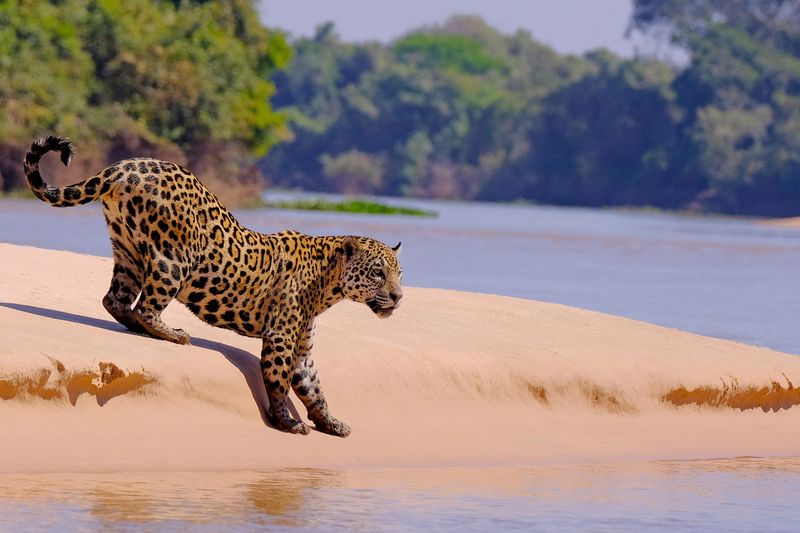
The jaguar is a solitary, powerful predator of the Americas, known for its stealthy movements and deadly bite. With a robust, muscular build and a coat speckled with rosettes, the jaguar moves through the jungle like a shadow.
Unlike other big cats, jaguars are often skilled swimmers, preferring to hunt along rivers and lakes. Their strength, agility, and elusive nature make them one of the most awe-inspiring predators in the wild.
22. Snowy Owl
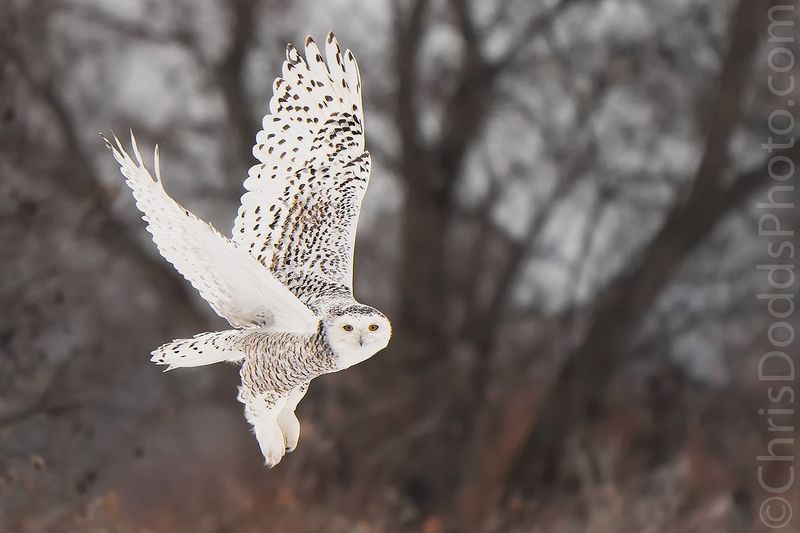
The snowy owl is a majestic creature that thrives in the cold, vast tundra. With its white feathers blending into the snowy landscape, it hunts in the dark winter nights, its large yellow eyes piercing through the darkness.
The snowy owl’s calm and serene demeanor, combined with its remarkable hunting abilities, makes it a symbol of the untamed beauty of the Arctic.
23. Lion
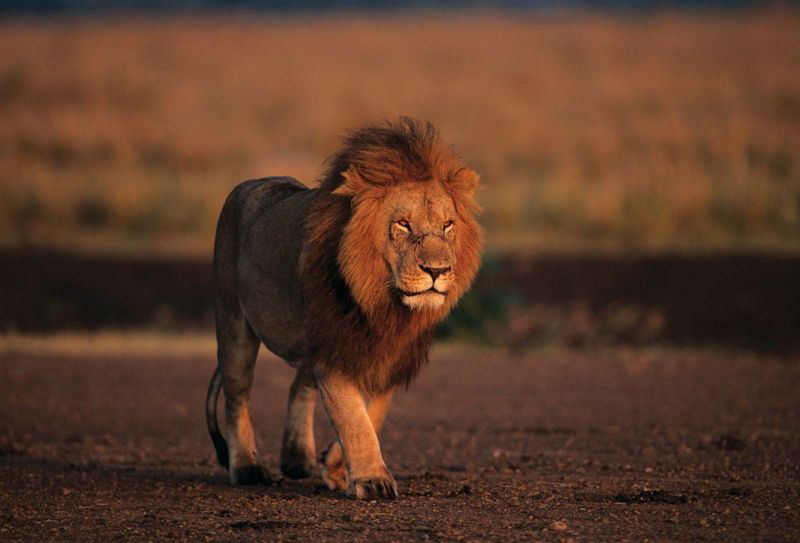
The lion, often called the “king of the jungle,” is the embodiment of strength, power, and majesty. With its flowing mane and commanding presence, the lion is a social predator that thrives in groups, or prides.
As a symbol of courage and leadership, the lion is revered around the world, and its roar can be heard echoing through the savanna, asserting its dominance over the wild.
24. Macaw
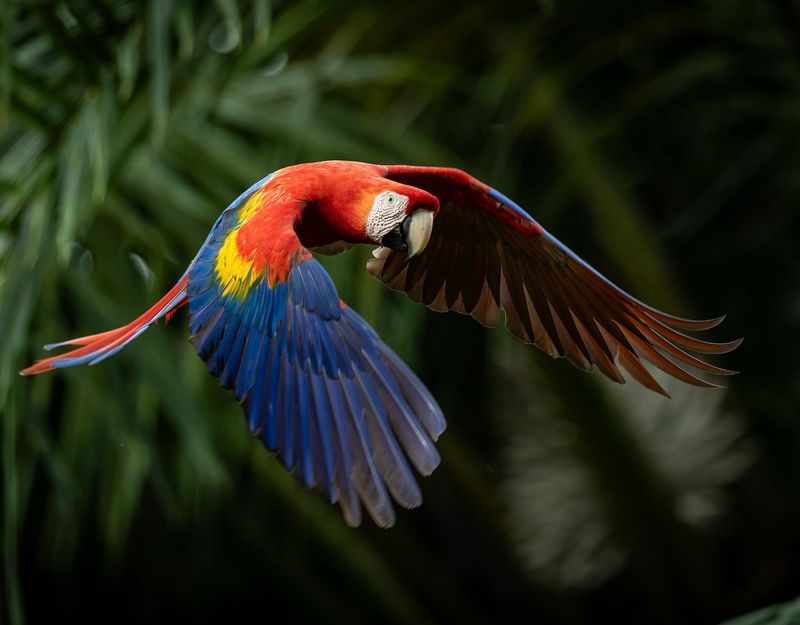
The macaw is a stunningly colorful parrot, known for its vibrant feathers and playful personality. Native to the rainforests of Central and South America, macaws are highly intelligent birds that form strong bonds with their mates.
Their striking colors and loud calls make them one of the most recognizable birds in the world, and their playful antics add to their charm and majesty.
25. Giraffe
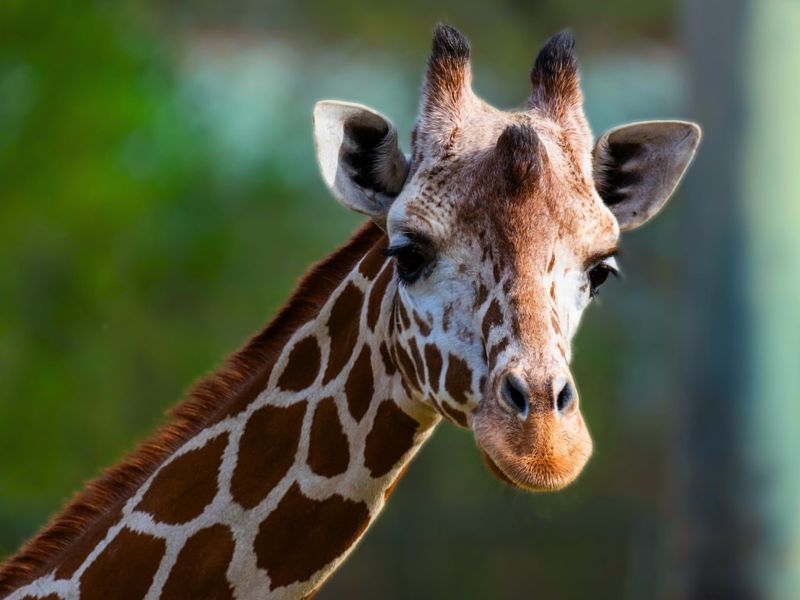
The giraffe, with its long neck and towering presence, stands as one of the most iconic creatures in Africa. Its unique silhouette against the savanna sky is instantly recognizable.
The giraffe’s peaceful nature, combined with its remarkable height, allows it to reach the highest branches of trees for food, making it a symbol of grace and beauty in the animal kingdom.
26. Cheetah
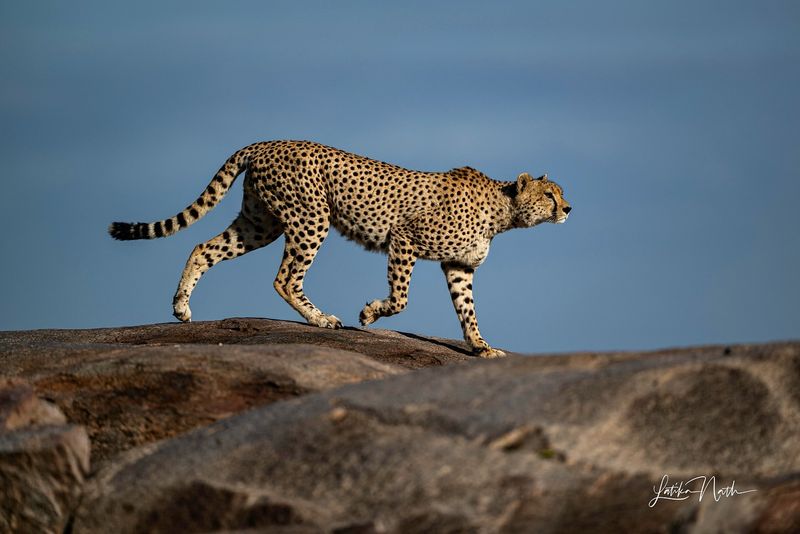
The cheetah is the fastest land animal, capable of reaching speeds up to 60 miles per hour in short bursts. Its slender, aerodynamic body is built for speed, and it uses its incredible agility to chase down prey in the African savanna.
Cheetahs combine grace and power, their ability to accelerate quickly and elegantly making them one of the most awe-inspiring animals on the planet.
27. Siberian Crane
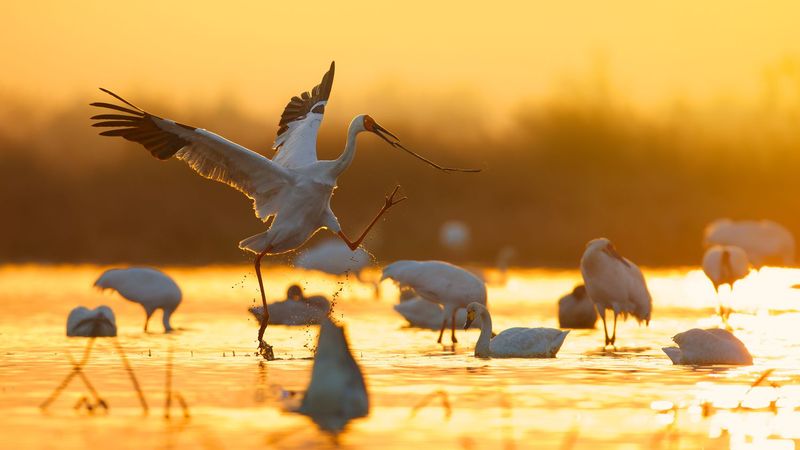
The Siberian crane is a rare and majestic bird that migrates thousands of miles across Eurasia. Known for its striking white feathers and long legs, the Siberian crane’s graceful flight patterns are a sight to behold.
These migratory birds face many challenges, yet their resilience and beauty continue to inspire awe, especially as they soar across vast landscapes.
28. Albatross
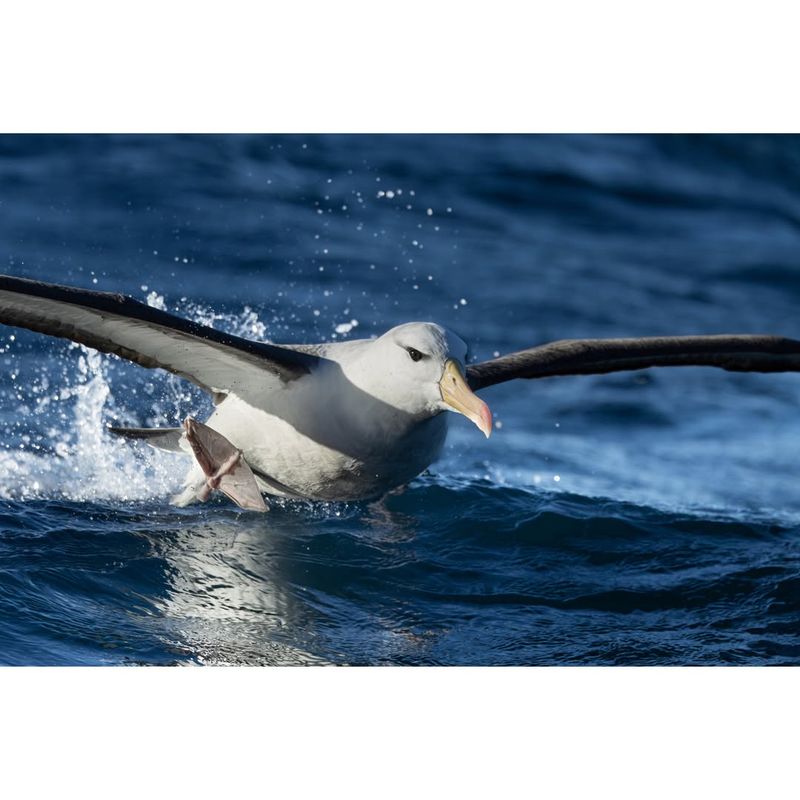
The albatross is a bird that embodies freedom, gliding effortlessly across the oceans for thousands of miles. With its enormous wingspan, it is capable of flying without flapping its wings for hours, even days, at a time.
The albatross is a true symbol of endurance and adaptability, able to navigate the most remote areas of the Earth with ease.
29. Narwhal
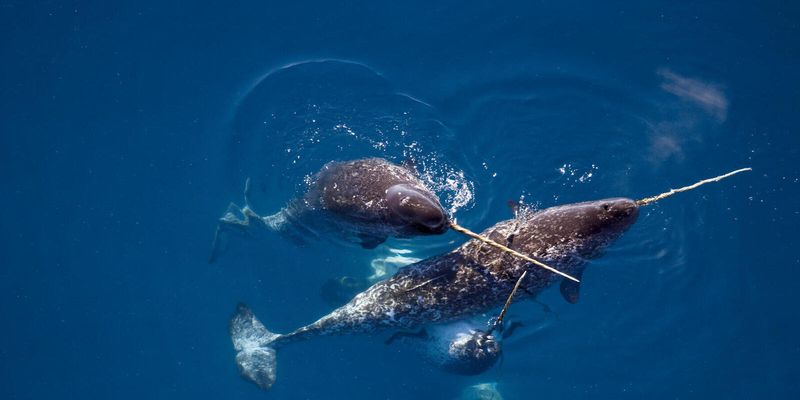
The narwhal is the mysterious, unicorn-like whale of the Arctic, known for its long, spiral tusk. These elusive creatures are often shrouded in legend and myth, but their reality is just as fascinating.
The tusk is actually an elongated tooth, and narwhals use it in a variety of ways, from communication to sensing the environment around them, making them one of the ocean’s most magical and awe-inspiring creatures.
30. Red Panda
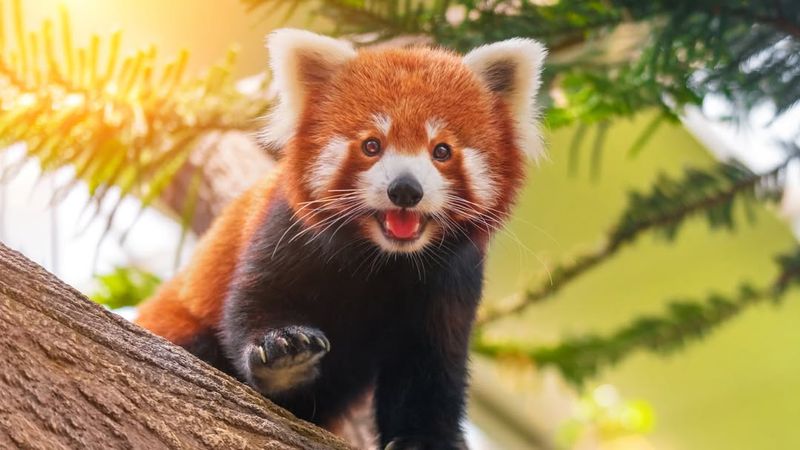
The red panda is a small, tree-dwelling mammal that roams the forests of the Himalayas. With its rust-colored fur and playful demeanor, the red panda seems to embody the spirit of a forest sprite.
Though they are not as well known as their giant cousins, red pandas are equally enchanting with their acrobatic skills and charming antics, making them an unforgettable sight in the wild.
31. Hippopotamus
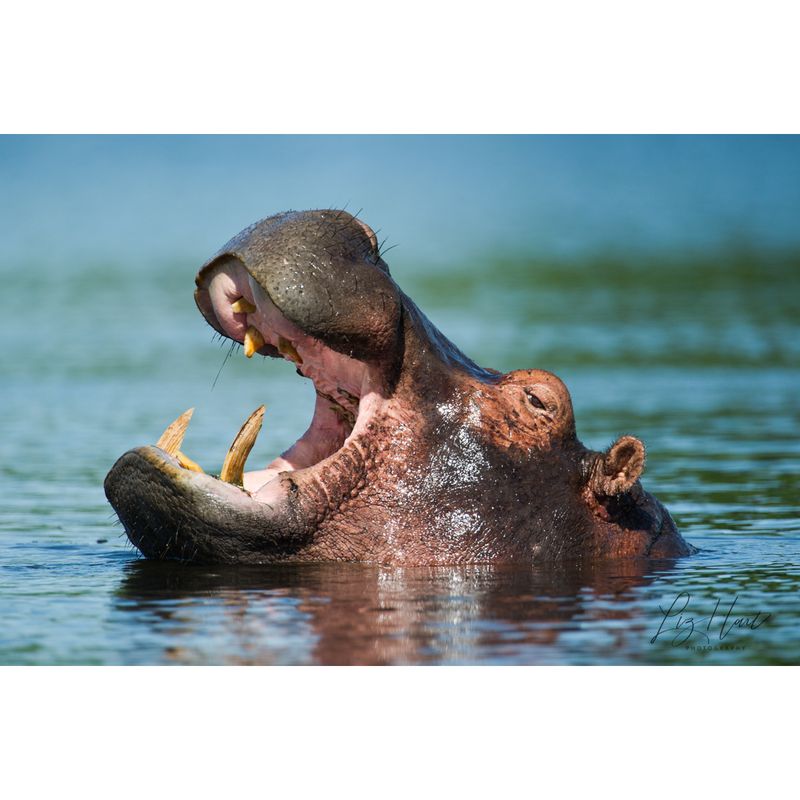
The hippopotamus, often found wallowing in the waters of Africa, is a massive and surprisingly agile creature. Despite its bulky size, the hippo is an excellent swimmer and can move quickly both in the water and on land.
Famous for its territorial nature and powerful jaws, the hippopotamus’s sheer size and strength make it an awe-inspiring force in the wild.
32. Okapi
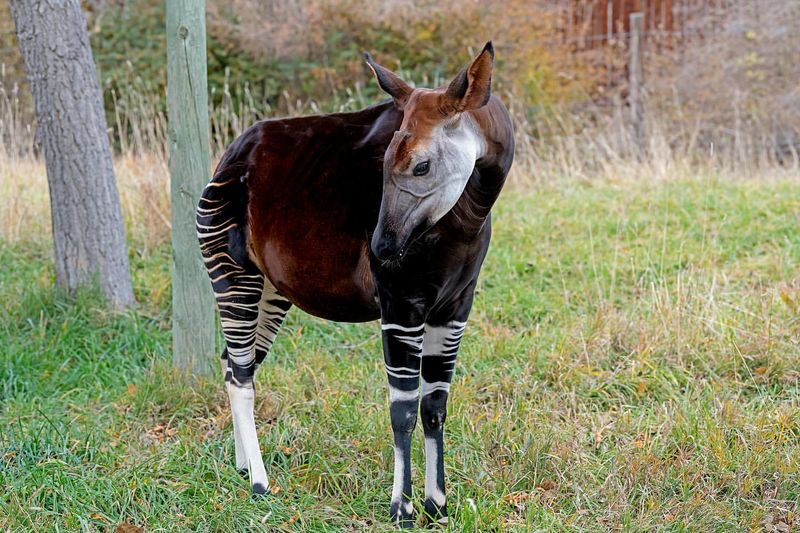
The okapi is an elusive and enigmatic creature, often referred to as the “forest giraffe.” With its long neck and zebra-like stripes, the okapi looks like something out of a dream.
Native to the dense rainforests of Central Africa, the okapi remains one of the world’s most mysterious animals, rarely seen by humans. Its elegance and uniqueness make it a symbol of the hidden wonders of the animal kingdom.
33. Green Sea Turtle
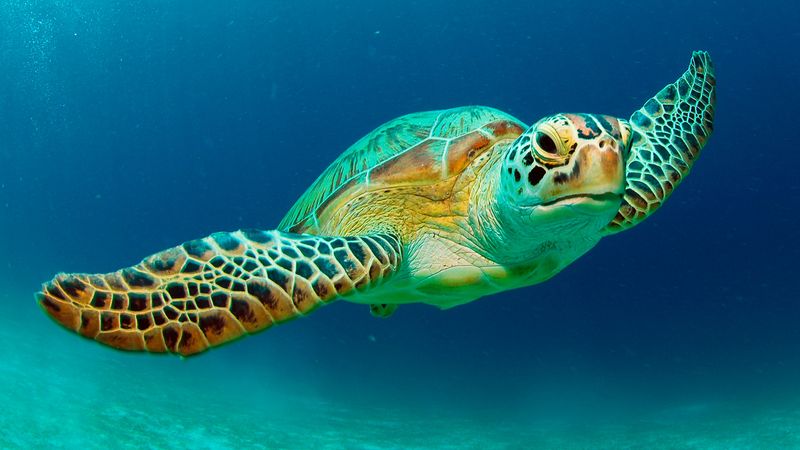
The green sea turtle is a graceful swimmer of the oceans, known for its long migrations and remarkable navigation skills.
These ancient mariners travel thousands of miles across the world’s oceans, always returning to the same beaches to nest. With their peaceful nature and strong connection to both land and sea, green sea turtles are one of the most awe-inspiring creatures of the ocean.
34. Arctic Wolf
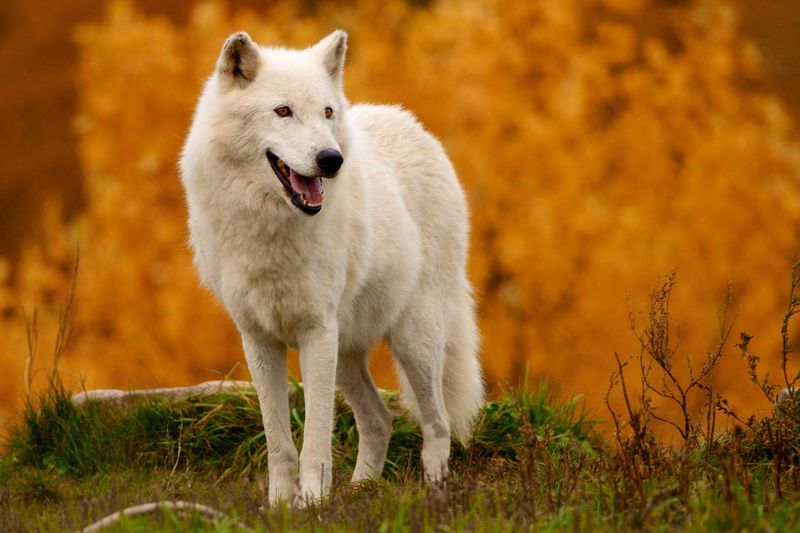
The arctic wolf is a creature of the cold, thriving in the frozen tundra of the Arctic. With its white fur blending into the snow, the Arctic wolf is perfectly adapted to survive in one of the harshest environments on Earth.
Despite the bitter cold, it hunts and thrives in packs, showcasing both resilience and elegance as it roams the frozen wilderness.

